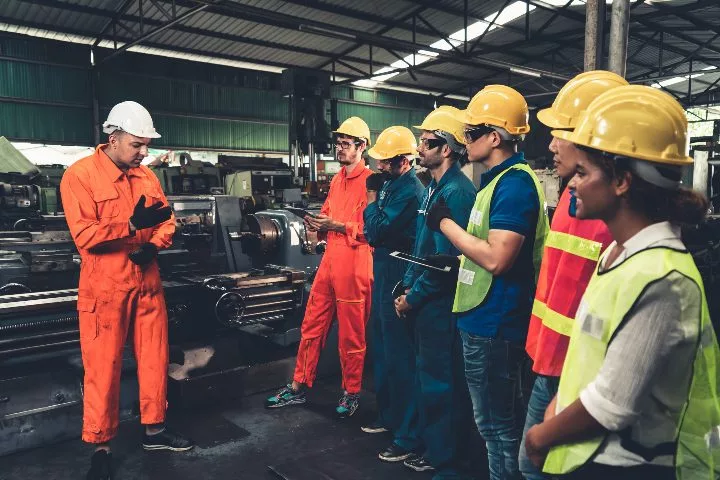What Is Maintenance Management?
Maintenance management is a structured approach to managing and maintaining the physical assets of an organization. It involves a series of processes that ensure equipment, facilities, and systems are in optimal condition, safe, and efficient for use. By implementing effective maintenance strategies, companies can reduce costs, increase productivity, and extend the lifespan of their assets.
Maintenance management systems help track equipment, workers, contractors, and associated costs. This not only reduces repair and inspection expenses but also ensures a safer and more productive work environment. These systems play a crucial role in preventing unplanned downtime and ensuring smooth operations across industries.

With the right tools, such as maintenance management software, businesses can streamline their operations by scheduling preventive maintenance, monitoring asset conditions, and minimizing unexpected failures. This proactive approach not only saves money but also enhances overall efficiency and safety.
Today, maintenance management combines traditional practices with modern technologies, including computerized systems and automation, to achieve maximum performance and reliability. As industries evolve, so do the methods used to manage and maintain critical assets.
Why Is Maintenance Management Important?
For everyday users, equipment failure might just be an inconvenience—like a delayed train or a power outage. However, for large organizations, unplanned equipment failure can lead to significant financial losses and operational disruptions. According to Aberdeen Strategy and Research, unplanned downtime can cost companies up to $260,000 per hour in lost revenue.
This is where maintenance management systems come into play. They are designed to prevent such costly interruptions by ensuring that equipment is well-maintained, inspected regularly, and repaired before issues escalate. From transportation and IT to healthcare and manufacturing, these systems are essential in keeping operations running smoothly and safely.

Maintenance management is vital for several reasons, including reducing downtime, extending equipment life, increasing productivity, ensuring regulatory compliance, and even saving lives in high-risk industries. The goal is always to optimize performance while minimizing waste and risk.
Types of Maintenance Management
There are various types of maintenance management approaches, each suited to different needs and environments. Understanding these types helps businesses choose the most appropriate strategy for their operations.

Here are five common types of maintenance management:
1. Run-To-Failure Maintenance
This is the simplest form of maintenance, where equipment is used until it breaks down. While this method may seem cost-effective initially, it often leads to higher long-term costs due to emergency repairs and potential production losses.
2. Time-Based Maintenance
Time-based maintenance involves scheduled inspections and maintenance tasks based on a calendar. While it helps prevent some failures, it may not be the most efficient method, as it doesn't account for the actual condition of the equipment.
3. Condition-Based Maintenance
Condition-based maintenance uses sensors and monitoring systems to assess the real-time condition of equipment. This allows for timely interventions before a failure occurs, making it more efficient than time-based approaches.
4. Predictive Maintenance
Predictive maintenance goes a step further by using data analytics and machine learning to forecast potential equipment failures. This proactive approach helps avoid unexpected breakdowns and reduces downtime.
5. Prescriptive Maintenance
Prescriptive maintenance is the most advanced type, offering not just predictions but also specific recommendations for action. It enables equipment to self-diagnose and suggest solutions, making maintenance more efficient and less reactive.
Each type has its own advantages and limitations, and the best choice depends on the industry, equipment, and business goals.
Maintenance Inspections
Inspections are a fundamental part of any maintenance management system. They help identify potential issues before they become major problems, ensuring the safety and reliability of equipment and facilities.

There are several types of maintenance inspections, including safety inspections, failure-finding inspections, building interior and exterior inspections, and drone-assisted inspections. Each serves a unique purpose in maintaining the integrity and functionality of a facility.
Drones have revolutionized the inspection process by providing a safer, more efficient way to monitor hard-to-reach areas. With advanced sensors and cameras, drones can detect issues that might otherwise go unnoticed, improving both safety and accuracy.
As technology continues to advance, the role of drones in maintenance inspections is expected to grow, making them an essential tool in modern maintenance management.
Examples of Maintenance Management
Maintenance management is widely used across various industries to improve efficiency, safety, and cost-effectiveness. Here are a few examples of how it is applied in practice:
1. Maintenance Management in Restaurants
Restaurants rely heavily on kitchen equipment, which must be regularly maintained to ensure food safety and service quality. Implementing a computerized maintenance management system (CMMS) can significantly reduce repair times and minimize equipment downtime.
2. Maintenance Management in Construction
In construction, equipment failure can lead to costly delays and safety hazards. Effective maintenance management ensures that all machinery is properly maintained, reducing the risk of accidents and project setbacks.
3. Maintenance Management in Hospitality
Hotels and resorts deal with numerous maintenance requests daily, from plumbing issues to elevator maintenance. A robust maintenance management system helps streamline these tasks, improving guest satisfaction and operational efficiency.
These examples highlight the importance of maintenance management in diverse sectors, demonstrating its value in enhancing performance and reducing risks.
Maintenance Management Software
There are many software solutions available to support maintenance management, each with its own features and benefits. Choosing the right one depends on the specific needs of your business.

Some popular options include UpKeep, Aptean, ValueKeep, Limble, and FMX. These platforms offer features such as automated task scheduling, real-time monitoring, and reporting capabilities, helping businesses manage their maintenance operations more effectively.
Maintenance Manager Jobs
A career in maintenance management offers a variety of roles across different industries. Maintenance managers are responsible for overseeing the upkeep of facilities, equipment, and systems to ensure they operate efficiently and safely.

Key responsibilities include managing budgets, coordinating with contractors, ensuring compliance with regulations, and reporting on maintenance progress. Maintenance managers must also be skilled in problem-solving, communication, and leadership.
Maintenance Manager Salary
The average annual salary for a maintenance manager is around $80,000, though this can vary depending on location, industry, and experience. Entry-level positions typically start at around $55,000, while experienced professionals can earn over $100,000 annually.
Shandong Jianlong Special Steel Co., Ltd. , https://www.jianlongsteelpipe.com